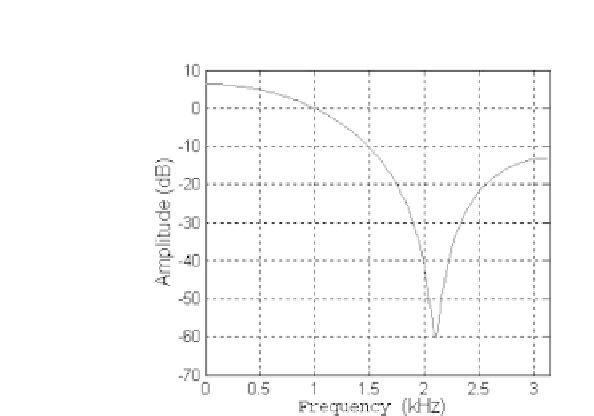Cryptography Reference
In-Depth Information
Figure 11.3 - Frequency response of the
5
-path discrete-time channel.
main techniques usually implemented in systems. The interested reader can
find additional information in Chapters 10 and 11 of [11.44], in articles [11.45]
and [11.54] or in topic [11.11], for example.
A first solution, called
Maximum Likelihood Sequence Detection
,orMLSD,
involves searching for the most probable sequence transmitted relatively to the
observation received at the output of the channel. We can show that this cri-
terion amounts to choosing the candidate sequence at the minimum Euclidean
distance from the observation, and that it thus minimizes the error probability
per sequence, that is to say, the probability of choosing a candidate sequence
other than the sequence transmitted. A naive implementation of this criterion
involves listing the set of admissible sequences in such a way as to calculate the
distance between each sequence and the observation received, then to select the
sequence closest to this observation. However, the complexity of this approach
increases exponentially with the size of the message transmitted, which turns
out to be unacceptable for a practical implementation.
In a famous article dating from 1972 [11.27], Forney noted that a frequency
selective channel presents a memory effect whose content characterizes its state
at a given instant. More precisely, state
s
of the channel at instant
i
is perfectly
defined by the knowledge of the
L
1
previous symbols, which we denote
s
=
(
x
i
,...,x
i−L
+2
)
. This fact is based on the representation of the channel in the
form of a shift register (see Figure 11.1). The evolution of the state of the channel
over time can then be represented by trellis diagram having
M
L−
1
states, where
M
denotes the number of discrete symbols in the modulation alphabet. As
an illustration, we have represented in Figure 11.4 the trellis associated with
−



